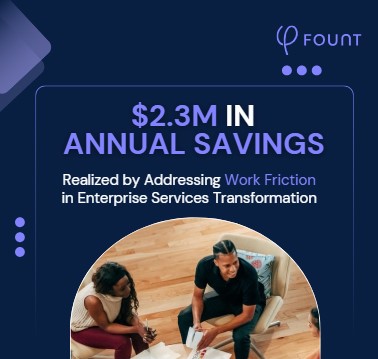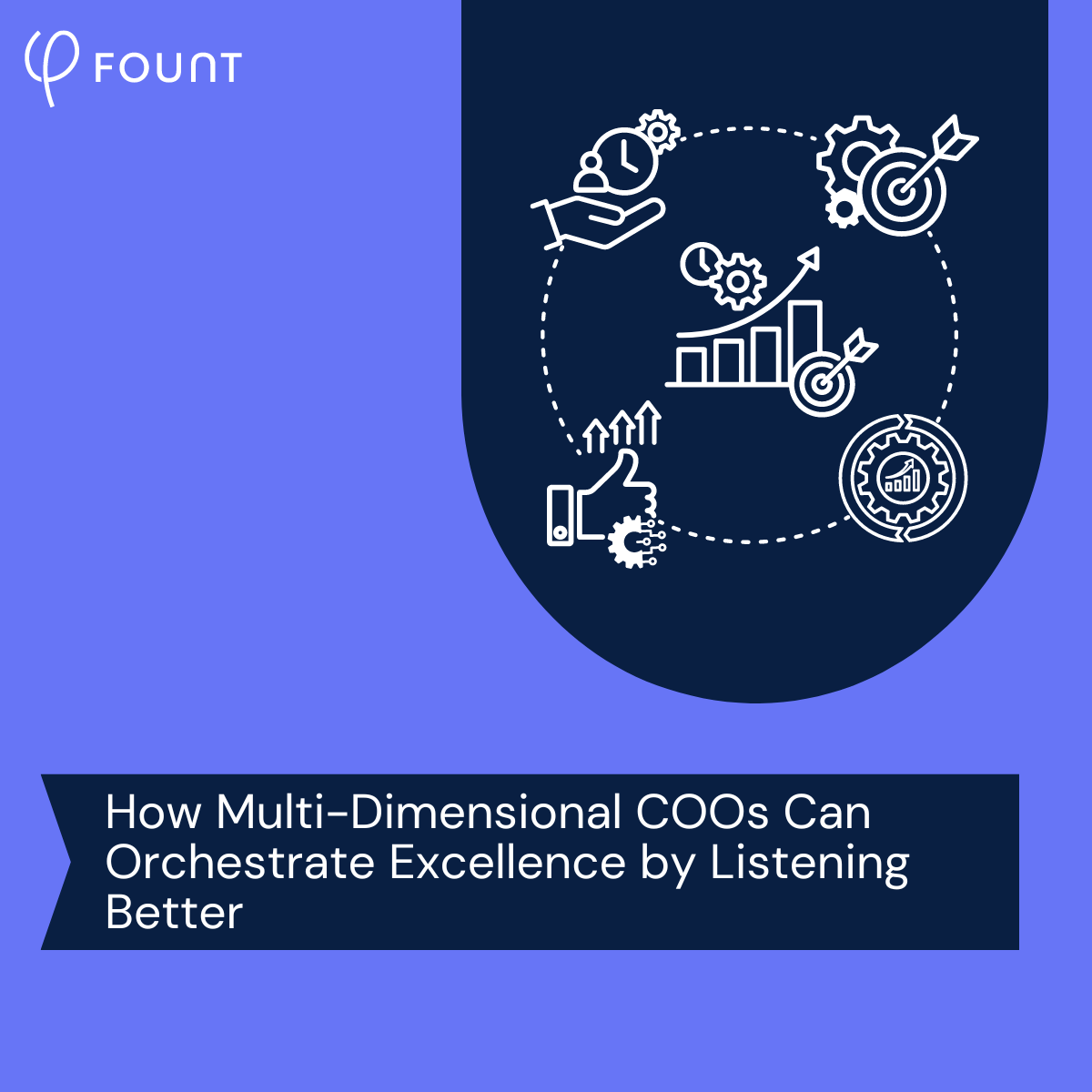Table of Contents
FOUNT vs. Process Mining vs. Employee Engagement
Gain a clear understanding of the differences between process mining, employee engagement, and work friction data.
Whether you want to measure the effectiveness of a specific AI tool or the impact of a larger digital transformation, choosing the right data to analyze is essential. In this piece, we’ll break down the difference between three types of internal data, all of which measure some aspect of the internal operations of a business:
- Process mining, which measures internal processes based on analysis of data gathered from the software people use to complete those processes.
- Employee engagement, which measures how employees feel about their jobs.
- Work friction, which measures where and how work is slowed by various obstacles.
You’ll walk away with a clear sense of how measuring work friction fills the gap between process mining and employee engagement data, along with a clear sense of how FOUNT’s work friction analysis can benefit your bottom line.
Process Mining: Data Gaps on Employee Impact
Process mining aims to identify and improve inefficient processes by creating a map of every digital touchpoint involved in completing these processes. It tends to work best when every action involved in a given process is digital – that is, when employees aren’t taking additional steps that can’t be tracked.
But that’s also a major shortcoming of process mining: many workplace processes involve non-digital steps. For example, if an employee always takes a coffee break after submitting a request, knowing that the system takes several minutes to process that request.
Another shortcoming of process mining arises when it comes to the optimization of processes. While process mining may give a fairly accurate map of what a process looks like, it can’t provide any context as to why certain bottlenecks are happening.
This can pose difficulties for organizations. While a process mining exercise may show the presence of a bottleneck and therefore justify resources being spent on that bottleneck, it doesn’t provide leaders with any information on what to change.
Often, the missing information lies not in the digital systems (ERPs, CRMs, messaging platforms, etc.) but in the people interacting with them. In other words, the key insights about why something isn’t working involve how the systems impact an employee’s ability to do their job.
Process mining can’t quantify that.
Voice of the Employee: Data Gaps on the Performance of Tools
Employee engagement data – also called voice of the employee – exists on the other end of the spectrum. Typically gathered by surveys, polls, performance reviews, focus groups, NPS scores, and similar means, engagement data aims to assess employee sentiment about various aspects of work.
And while there’s real value here – employees who feel like their opinions are listened to are more than eight times as likely to satisfy and keep customers – voice of the employee data doesn’t offer any insight into why they’re feeling that way.
In other words, employee sentiment data can identify the existence of a problem but cannot reliably point to what that problem is or how an organization might fix it.
The good news: there is a metric that measures the gap between process mining and employee engagement. It’s called work friction.
FOUNT’s Approach: Track Work Friction to See the “Why” Behind Inefficiencies and Disengagement
Work friction is anything that prevents employees from doing their jobs, including people, processes, and technology. In addition to having an immediate impact on productivity – to the tune of about two hours per day per employee – work friction causes frustration for the workers dealing with it.
Unchecked, work friction can lead to disengagement and attrition in addition to productivity losses, making it a hugely expensive and often overlooked phenomenon.
Now for the good news: work friction offers a way to quantify the gap between process mining and employee experience. Process mining evaluates how the digital components of processes fit together; voice of the employee surveys assess how workers feel about their jobs. Work friction assesses how employees are impacted by specific moments of work.
An analysis of your organization’s work friction lets you see…
- Which specific tasks and moments are sources of inefficiency for which specific employees.
- How big an impact points of friction have on employees’ work.
- How various tools impact employees’ ability to do their work.
From there, it’s a straightforward task to quantify which problems are having the biggest negative impact on your organization and therefore to prioritize solutions.
Put differently: While all three approaches can be valuable to an organization, depending on its needs, assessing work friction is unique in that it provides insight into how the component parts of a workplace impact employees’ ability to do their work. It is the only of these metrics that offers clarity about what an organization can change to eliminate the problems it faces.
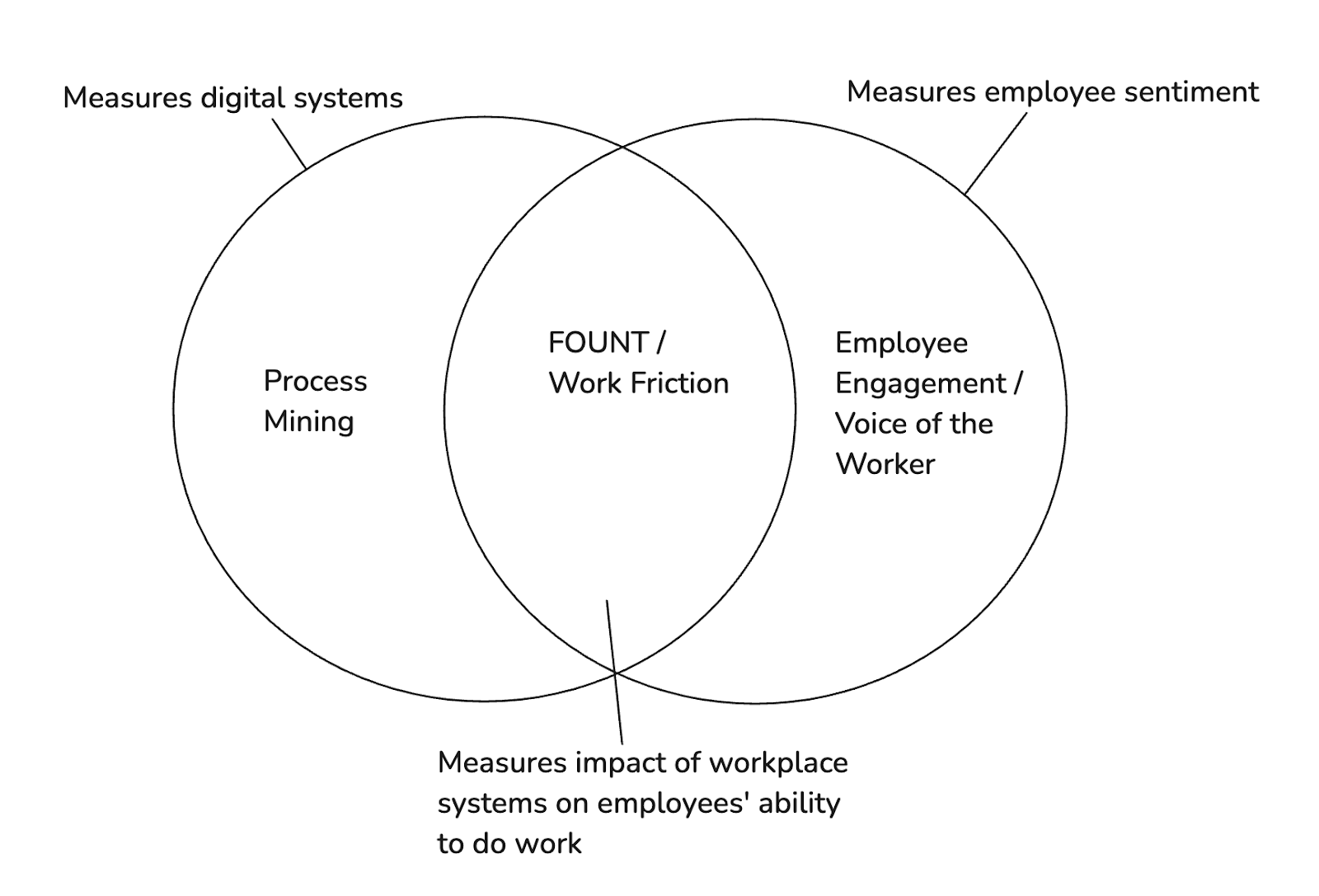
For Data You Can Act On, Look to Work Friction
It’s important to know what’s not working at your organization. Process mining can help you understand that. It’s also important to keep an eye on how your employees feel – which is the domain of employee engagement data.
But when you need to understand the why – why a new tool isn’t increasing productivity, why the call center’s 90-day attrition rate is so high, why adoption of a new system isn’t correlating with improved efficiency – work friction data can give you answers.
If you’re curious about what work friction data might uncover at your organization, get in touch. We’d be happy to listen to your situation and show you how FOUNT works.
Related Resources
See all News
Guest Post
3 Signs Your GBS Is Creating Friction Instead of Flow (And How to Fix It)
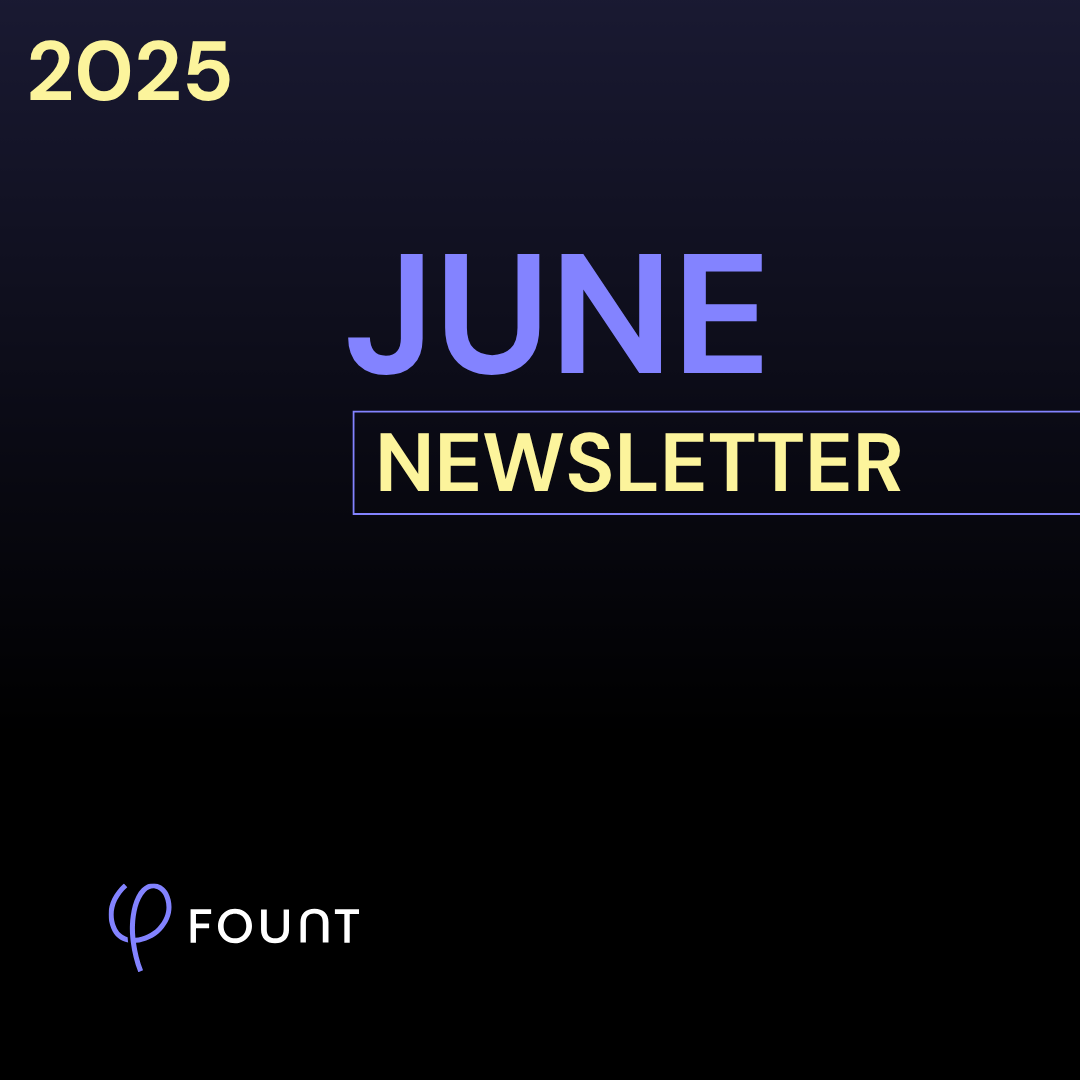
FOUNT News
June Newsletter: Friction is Killing Your AI ROI.
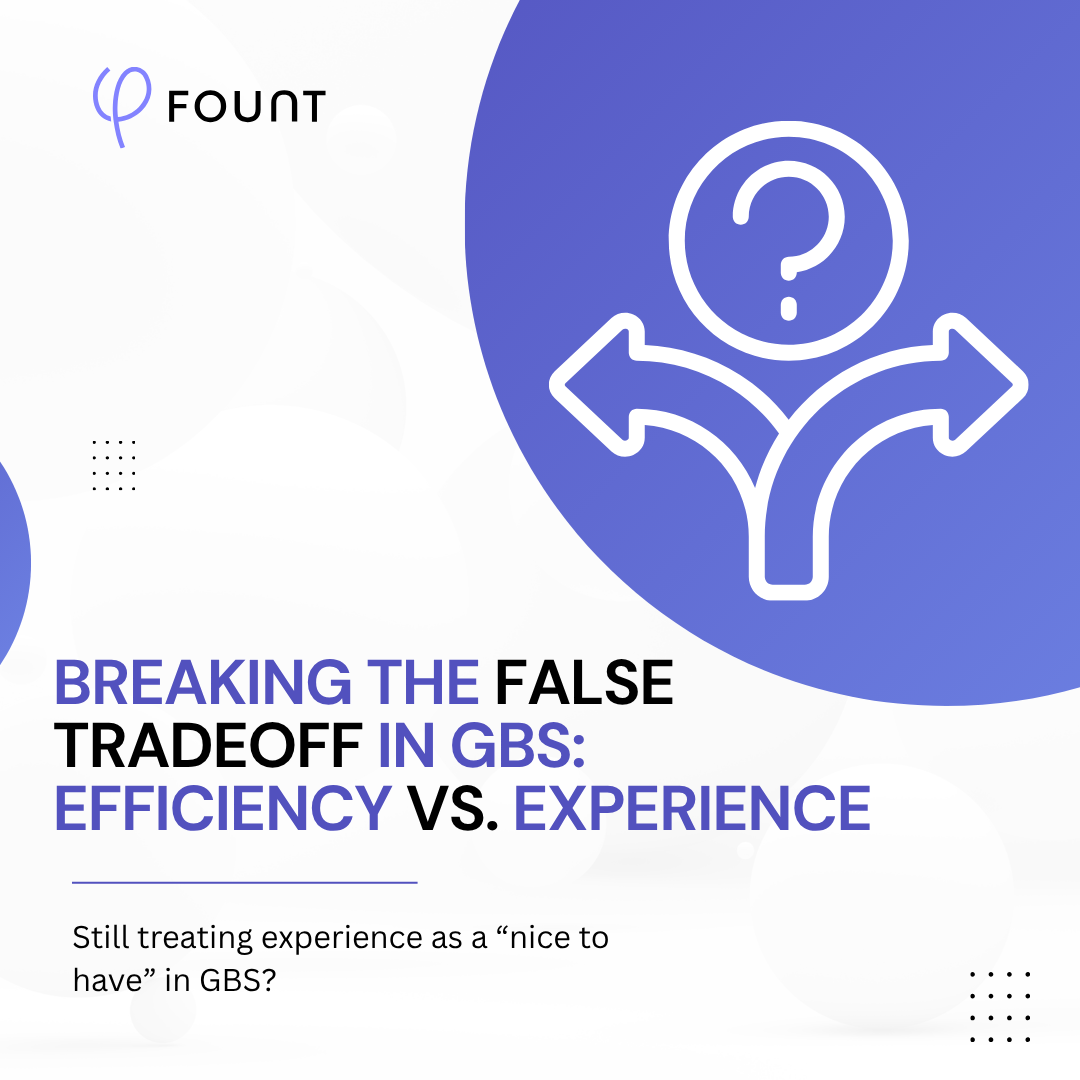
Insights
Breaking the False Tradeoff in GBS: Efficiency vs. Experience
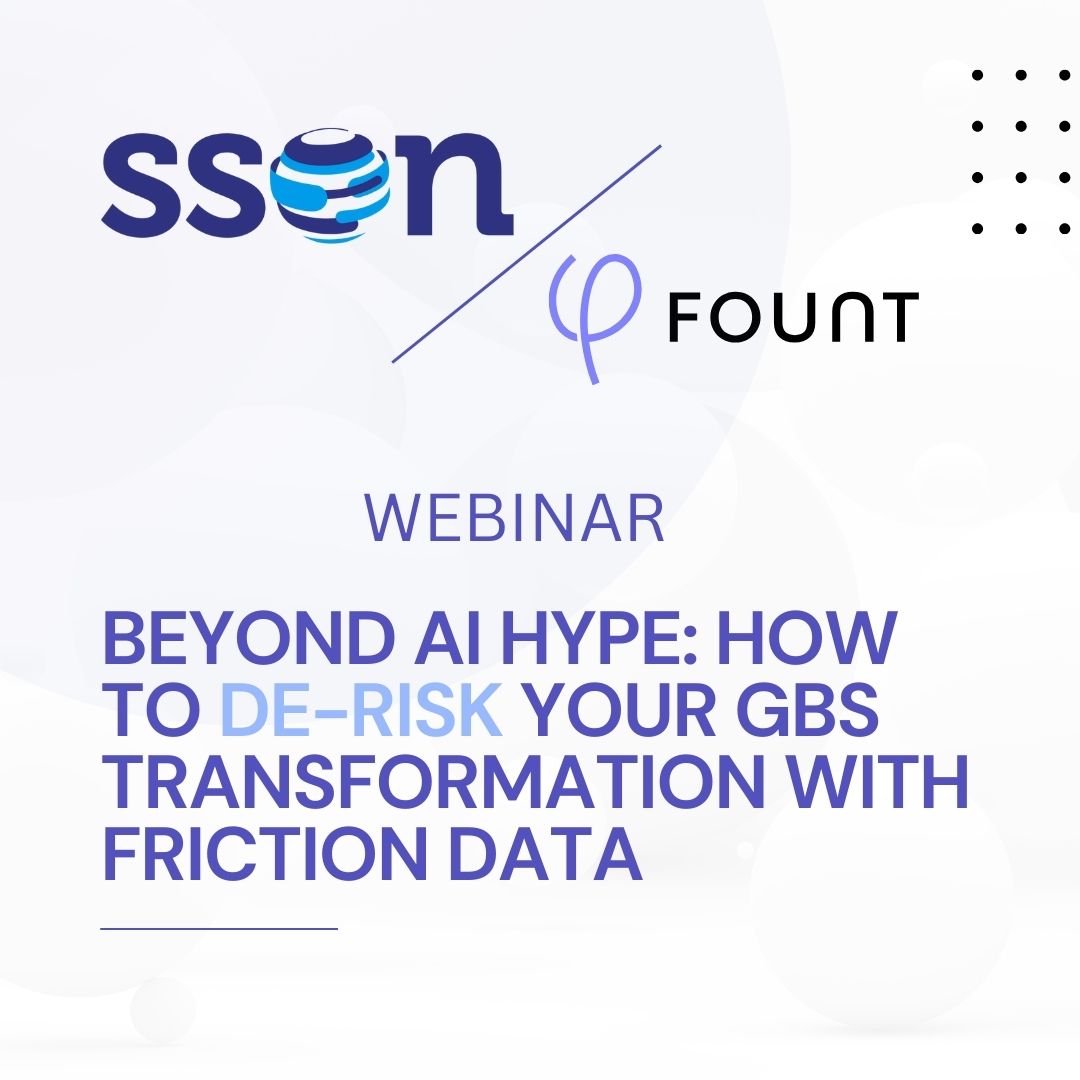
Events
LIVE Webinar – July 9th for SSON Network. Beyond AI Hype: How to De-Risk Your GBS Transformation with Friction Data
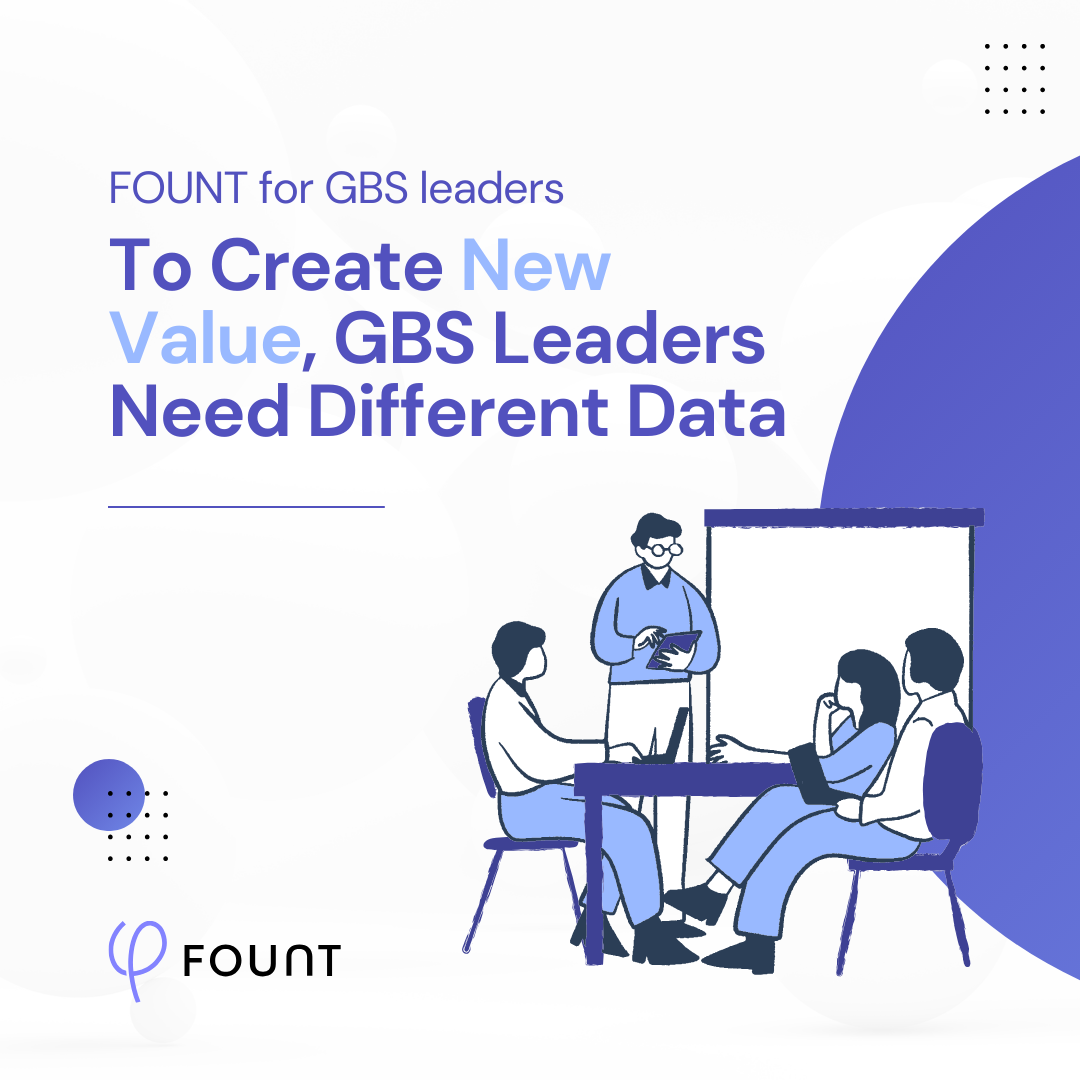
Insights
To Create New Value, GBS Leaders Need Different Data
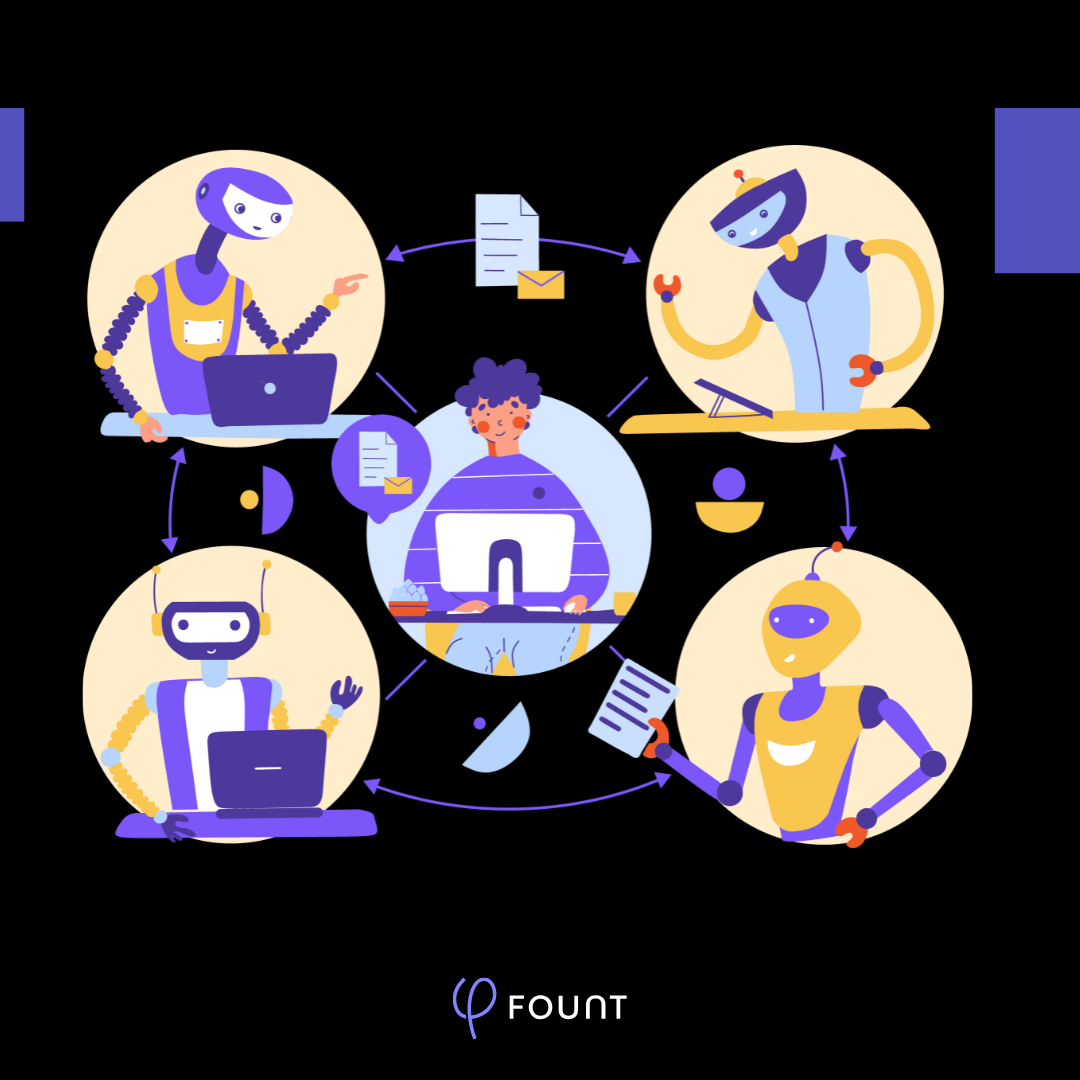
Insights
How to Keep Up with the Latest AI Developments
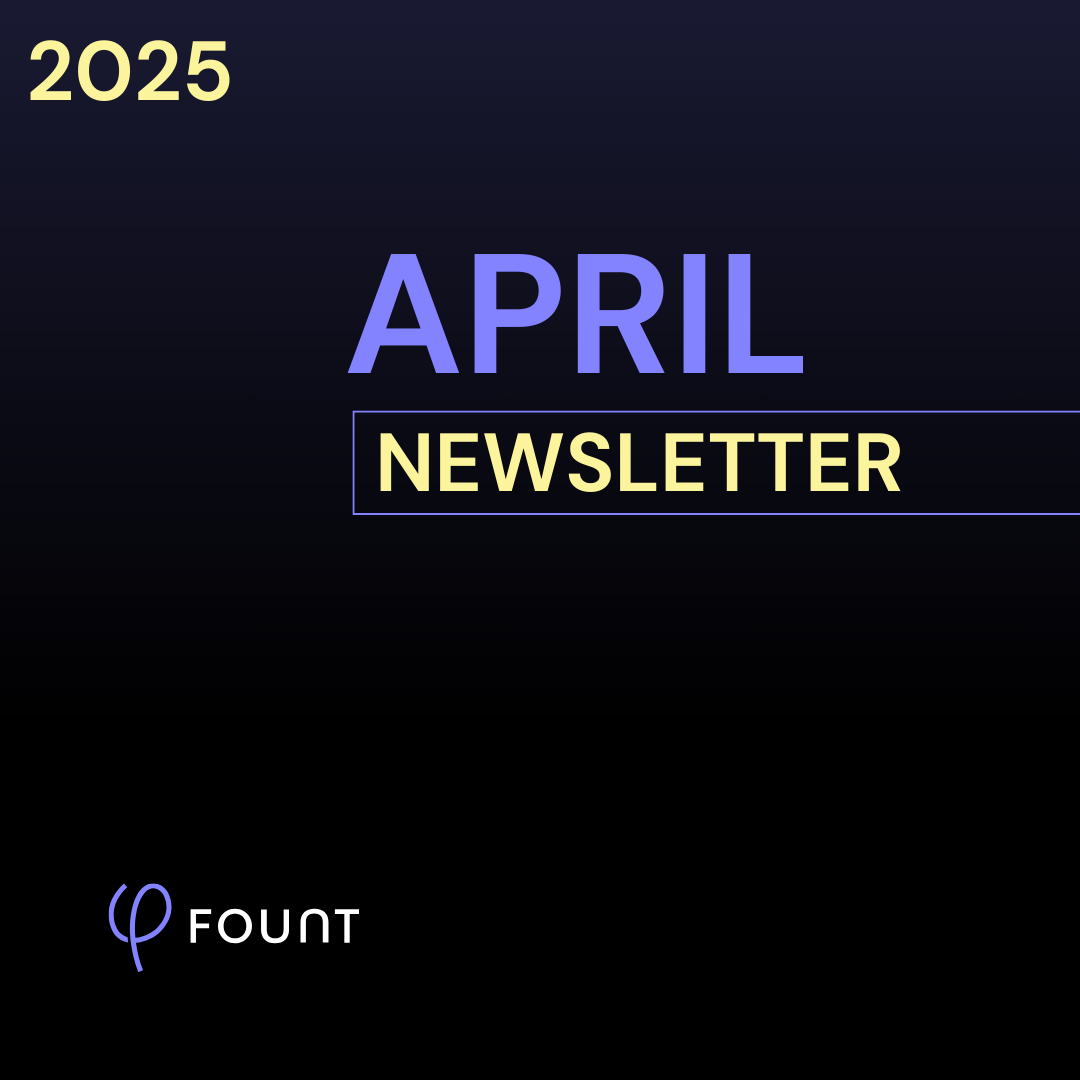
Insights
APRIL Newsletter. Friction: You Can’t Improve What You Can’t See

Guest Post
AI is Reshaping the HR Operating Model: Here’s What 15 Leading Companies Discovered
